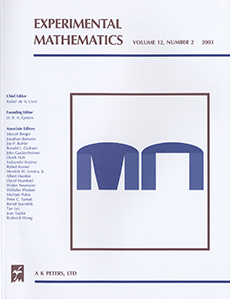Abstract
Recently, Friedman proved Alon's conjecture for many families of $d$-regular graphs, namely that given any $\epsilon > 0$, ``most'' graphs have their largest nontrivial eigenvalue at most $2\sqrt{d-1}+\epsilon$ in absolute value; if the absolute value of the largest nontrivial eigenvalue is at most $2\sqrt{d-1}$, then the graph is said to be Ramanujan. These graphs have important applications in communication network theory, allowing the construction of superconcentrators and nonblocking networks, as well as in coding theory and cryptography. Since many of these applications depend on the size of the largest nontrivial positive and negative eigenvalues, it is natural to investigate their distributions. We show that these are well modeled by the $\beta=1$ Tracy-Widom distribution for several families. If the observed growth rates of the mean and standard deviation as a function of the number of vertices hold in the limit, then in the limit, approximately 52% of $d$-regular graphs from bipartite families should be Ramanujan, and about 27% from nonbipartite families (assuming that the largest positive and negative eigenvalues are independent).
Citation
Steven J. Miller. Tim Novikoff. Anthony Sabelli. "The Distribution of the Largest Nontrivial Eigenvalues in Families of Random Regular Graphs." Experiment. Math. 17 (2) 231 - 244, 2008.
Information




